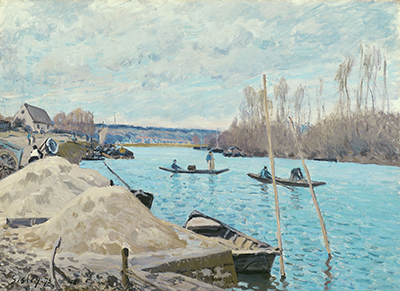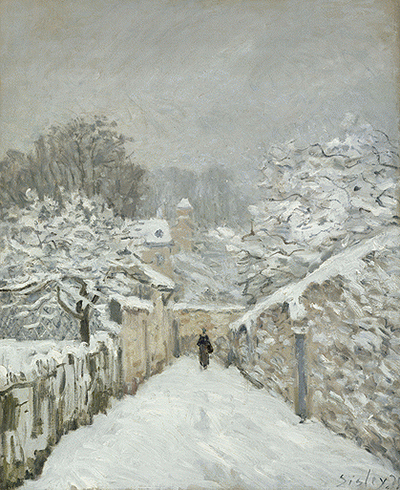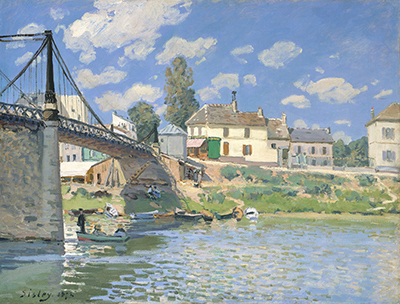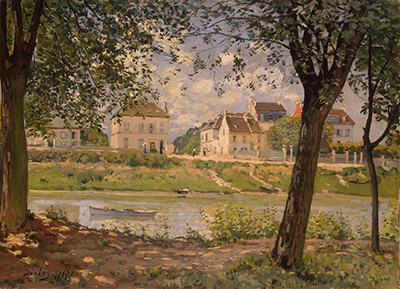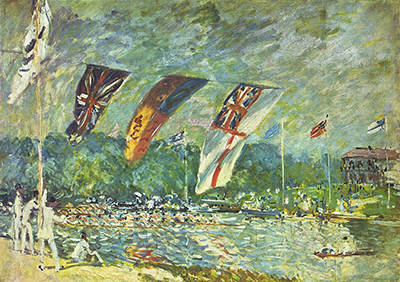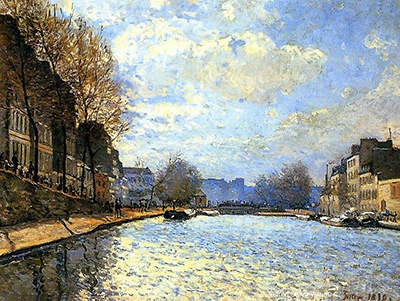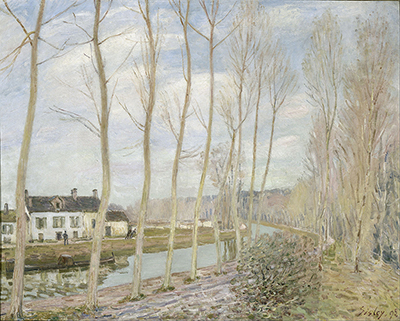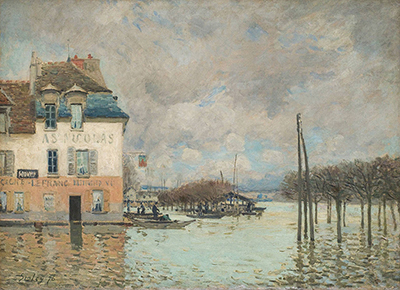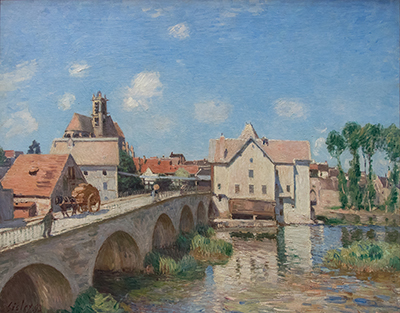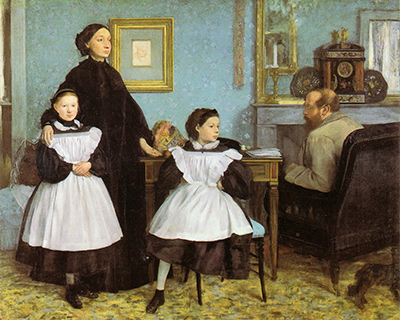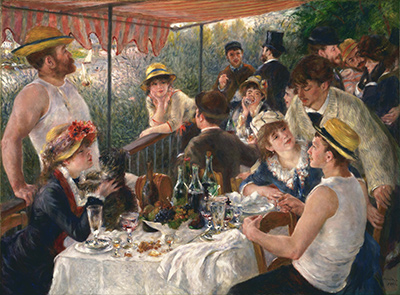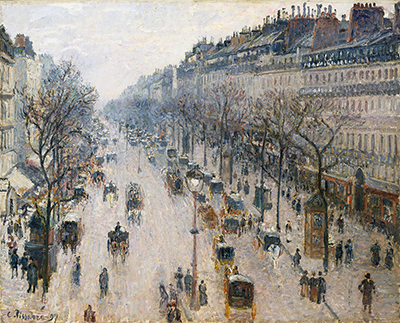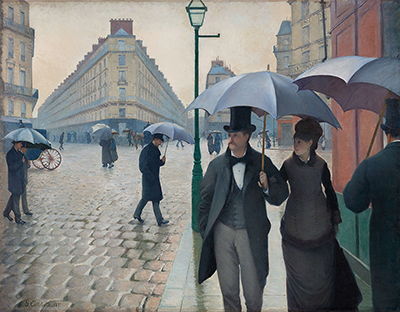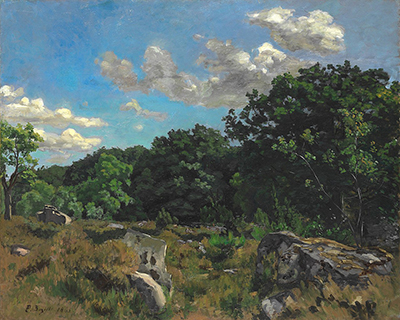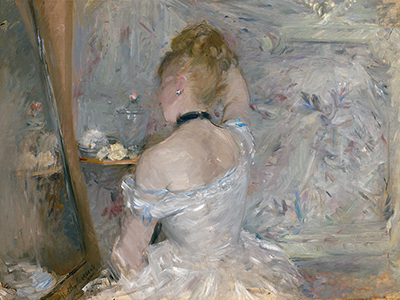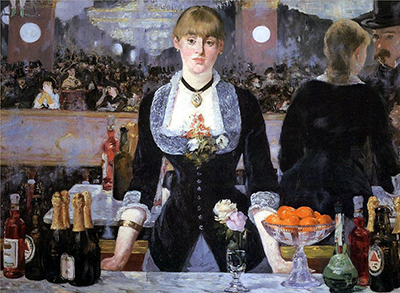Many Impressionist painters have featured the River Seine in their works. One of those painters was the 19th-century artist, Alfred Sisley. In 1875 Sisley completed the work titled The Seine at Port-Marly, Piles of Sand.
When it came to pictures of the River Seine, many Impressionists chose scenes that involved Parisians engaging in weekend leisure activities. These included activities such as boating and yachting, for example. Several of Sisley’s landscapes also include weekend leisure activities on the Seine. However, he also painted scenes that included events taking place during the working week. The picture of ‘The Seine at Port-Marly, Piles of Sand’ was one of those paintings. It is an oil on canvas work that measures 54.5 × 73.7 cm in size. Sisley signed the picture in the bottom left-hand corner, Sisley 75. The number refers to the year 1875.
At the centre of the painting, there are two workers on a flat-bottomed barge on the river. It shows them dredging sand from the Seine to create a navigable channel for barge traffic. Motorised barges were the primary means for transporting goods between Le Havre and Paris at the time. Critics saw the scene Sisley captures as being the most original of river scenes.
The scene is not just about the workers and boats on the river. On the left are the sand piles that the workers have dredged up from the river. The sand’s ochre colours contrast with the river, which is turquoise blue. Looking at the rest of the landscape, Sisley includes the town’s paper factory. In the background, it is possible to see barges on the opposite bank, possibly moored up. Sisley uses the top half of the painting to include in the landscape, a blue and cloudy sky. As a result, he uses the view to show what someone might have seen if they were standing on the quayside of the Seine during a working week.
The painting’s first recorded owner was a Dr Georges Viau, a Paris dentist and art collector. In 1900, he exhibited the painting at the Exposition Universelle. The picture has had several owners over the years. Its latest owner is the Art Institute of Chicago where it is on display to the public. In 1933 the painting was a gift from the estate of Martin A. Ryerson to the institute.
More Impressionist Artists



